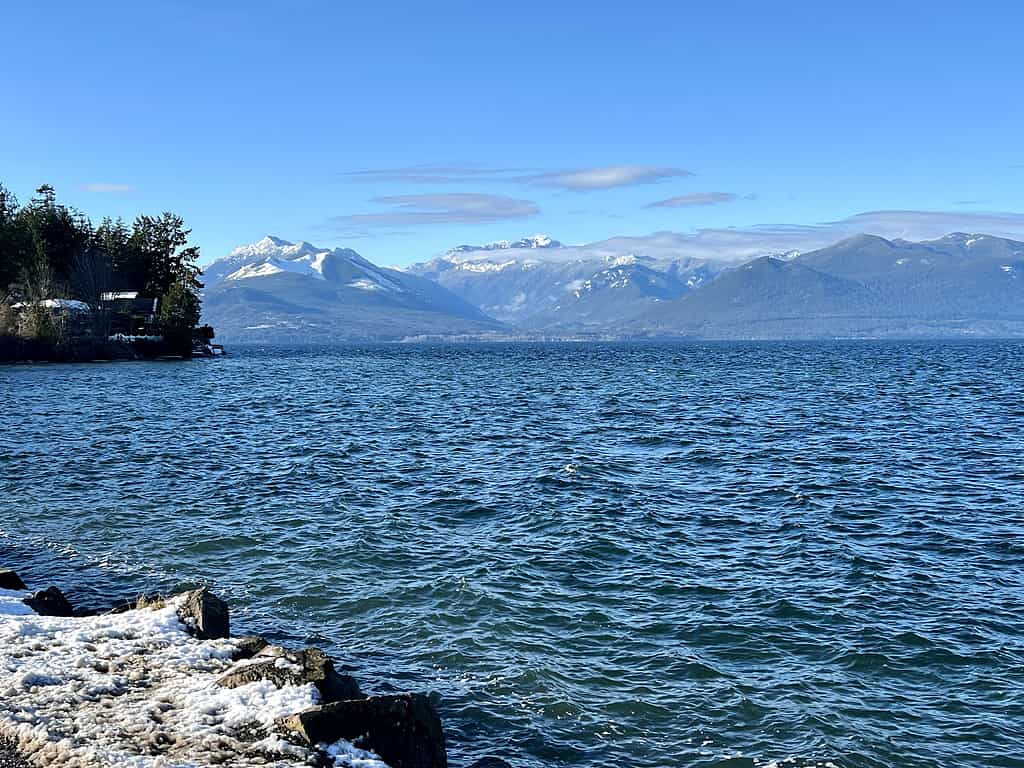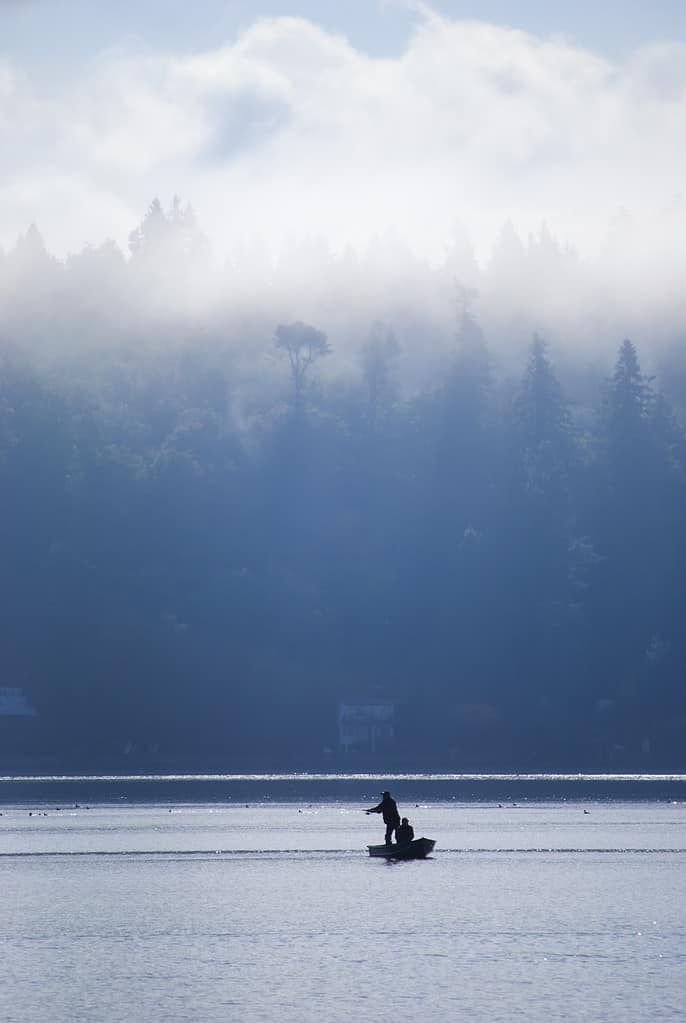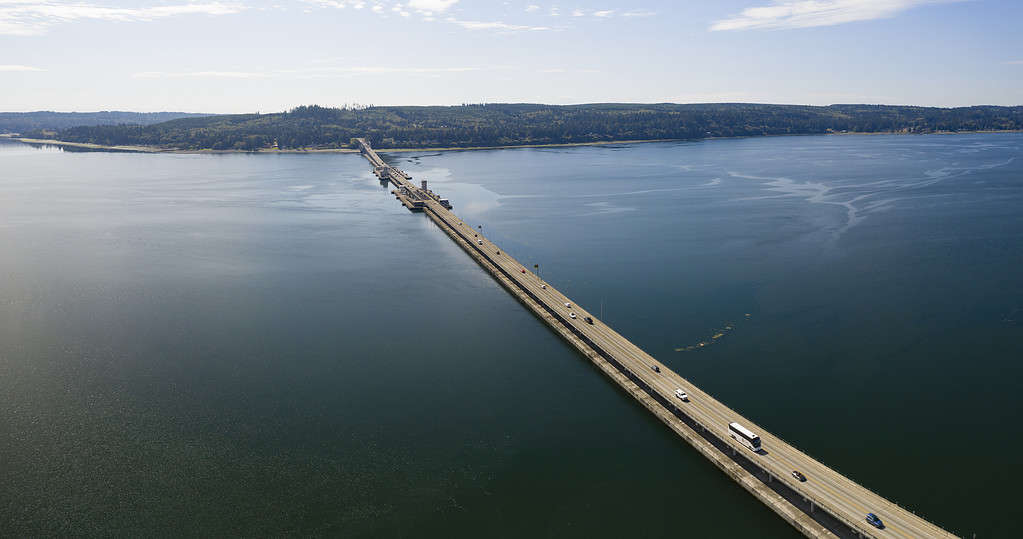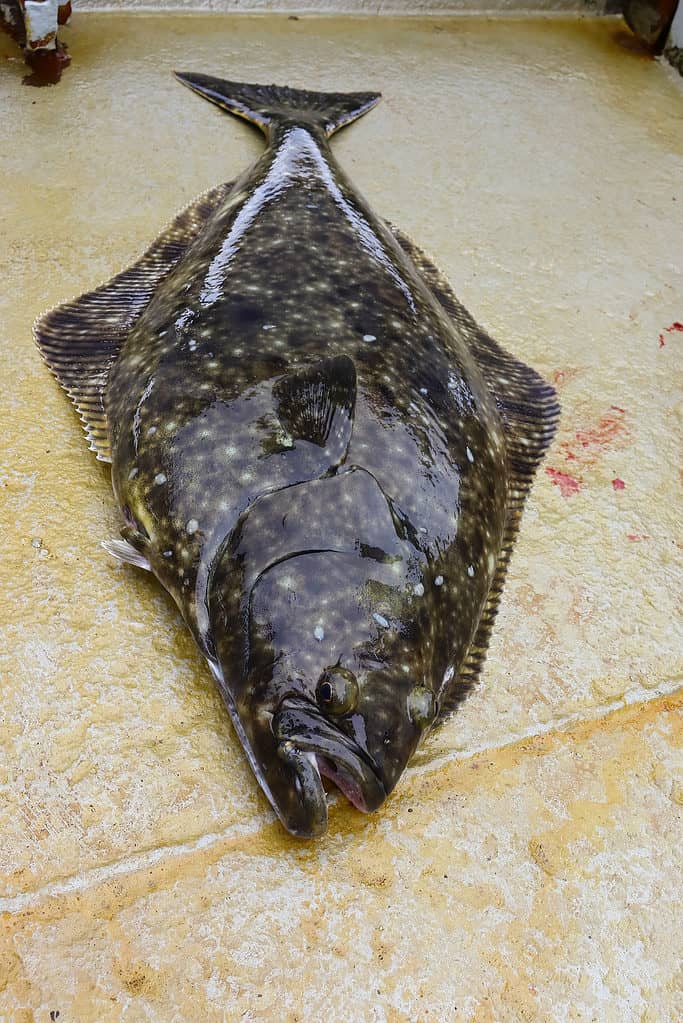In 1792, Hood Canal was named after a member of the Royal Navy named Admiral Lord Samuel Hood. Today, Hood Canal shares this namesake with Mount Hood and the Hood River. The depths of Hood Canal are one of the reasons that it’s one of the most unique waterways in the contiguous United States. Just how deep is Hood Canal? We’ll answer that now and delve into other specs about the area.
Where is Hood Canal?

Hood Canal is west of Seattle between the Kitsap and Olympic Peninsulas.
©melinda krieger/iStock via Getty Images
Hood Canal is west of the Seattle area in the Pacific Northwest region of Washington State. It separates the Kitsap and Olympic Peninsulas, and it’s part of the greater Puget Sound. It is one of 4 major basins of Puget Sound, and it is also a minor part of the Salish Sea.
What is Hood Canal?
Hood Canal is a 68-mile L-shaped saltwater fjord. Fjords are deep, long, and narrow. They’re usually created by glaciers.
Despite the use of the word canal, it is a natural waterway that was not created by humans. Hood Canal is the only saltwater fjord in the contiguous United States.
How Deep is Hood Canal?

Parts of Hood Canal are over 600 feet deep.
©heatherknittel/iStock via Getty Images
At its deepest, Hood Canal is over 600 feet deep. However, it averages about 175 feet deep. From the Great Bend, which is where the canal bends, and onward, it is no deeper than 130 feet. By the time it reaches its end at Lynch Cove in Belfair, it becomes a shallow intertidal mud flat.
How Was Hood Canal Formed?
Hood Canal was formed by glaciers that pushed through the region when the Cordilleran Ice Sheet of the Late Pleistocene retreated about 13 thousand years ago. As the ice sheet retreated, it carved out Hood Canal and other parts of Puget Sound.
How Wide is Hood Canal?

Hood Canal Bridge is the third longest floating bridge in the world.
©SEASTOCK/iStock via Getty Images
Hood Canal is between 1.25 to 2.5 miles wide at most spots. Its overall average width is about 1.5 miles.
The Hood Canal Bridge spans the length of Hood Canal near its northern end. It connects the Kitsap and Olympic Peninsulas via State Route 104.
This bridge spanning Hood Canal is the third longest floating bridge in the world, and it’s the longest floating bridge over salt water in a tidal basin. While building a floating bridge in an area with such extreme tidal fluctuations wasn’t ideal, the depth of Hood Canal eliminated all other options. It is anywhere from 80 to 340 feet deep right where any support structures for another bridge type would have had to go.
The Tides of Hood Canal
Because of Hood Canal’s unique location and shape, it plays host to massive tides. Its steep sides and narrow waters combined with the water volume of its extreme depths allow extremely different tidal heights. This is compounded by the geographical features of Puget Sound as a whole since water is already narrowed as it pushes into the Salish Sea through the Straight of Juan de Fuca.
Between high tide and low tide, the water level can vary by 10 feet or more given the positioning of the moon relative to Earth. Sometimes, king tides push into the region which can be a few feet higher than even the highest of normal tides. These king tides reach up to 16 feet in some areas which can cause damaging coastal flooding.
What Animals Live in Hood Canal?
The Hood Canal’s varying depths, tidal patterns, and extensive shorelines provide many habitats for a variety of life. The freshwater inlets also increase the biodiversity of the area. Both wild animals and farmed marine life are vital to the economy and sustainability of the region.
Giant Pacific Octopuses in Hood Canal

The giant Pacific octopuses in Hood Canal are some of the biggest in the world.
©karen crewe/Shutterstock.com
Giant Pacific octopuses (Enteroctopus dofleini) find refuge in Hood Canal. Because so many scuba divers want to lay eyes on one, the diving scene in Hood Canal is vibrant.
The giant Pacific octopuses in Puget Sound are the largest in the world. While it’s rumored that some are as large as 600 pounds, most weigh up to 150 pounds with a max radial tentacle span of 20 feet.
While the Kitsap Peninsula as a whole is not a protected area for octopuses, the entire Hood Canal is off-limits to those wishing to hunt giant Pacific octopuses. This doesn’t pose much of a problem as these huge octopuses do not make for good eating. They’re super rubbery and the hours it takes to make their flesh palatable isn’t worth the flavor trade-offs.
Even though the giant Pacific octopus population is not threatened, the idea of seeing one in the wild is exciting. It’s also good for the local economy to protect their habitats so that divers have a better chance of seeing them in the wild.
Hood Canal Shellfish

Spot Shrimp are huge shrimp that live in Hood Canal.
©melinda krieger/iStock via Getty Images
Oysters, mussels, and clams are popular food items supplied by Hood Canal. They grow almost anywhere along its shores. Squat lobsters are another cute little creature found in the waters of the canal.
Farmers grow oysters in Hood Canal for mass consumption, and each kind tastes a little different depending on the water makeup. Almost all of the oysters available are carefully raised Pacific oysters (Crassostrea gigas) with names that harken back to the habitats in which they’re grown. Some of the oysters farmed in Hood Canal are Blue Pool, Dosewallips, Dabob Bay, Quilcene, and Hama Hama.
Spot shrimp (Pandalus platyceros) are the largest shrimp that live in Hood Canal, and they grow over 9 inches in length. Coonstripe and pink shrimp also make their home in the waterway. All of these species are important commercial seafood sources as well as popular angler catches.
Fish Found in Hood Canal

Pacific halibut are found in Hood Canal.
©Nick Kashenko/Shutterstock.com
Hood Canal hosts summer chum salmon (Oncorhynchus keta pop. 2) that has evolved slightly to adapt to the unique conditions of this waterway. It is also an important waterway for coho salmon (Oncorhynchus kisutch) and other salmon species like chinook. There are a large handful of freshwater rivers and streams that flow into Hood Canal that these salmon access yearly for spawning.
Other fishes found in Hood Canal include various trout, rock cod, sturgeons, mackerels, smelts, sand lances, herrings, anchovies, sardines, and Pacific halibut.
The photo featured at the top of this post is © melinda krieger/iStock via Getty Images
Thank you for reading! Have some feedback for us? Contact the AZ Animals editorial team.






